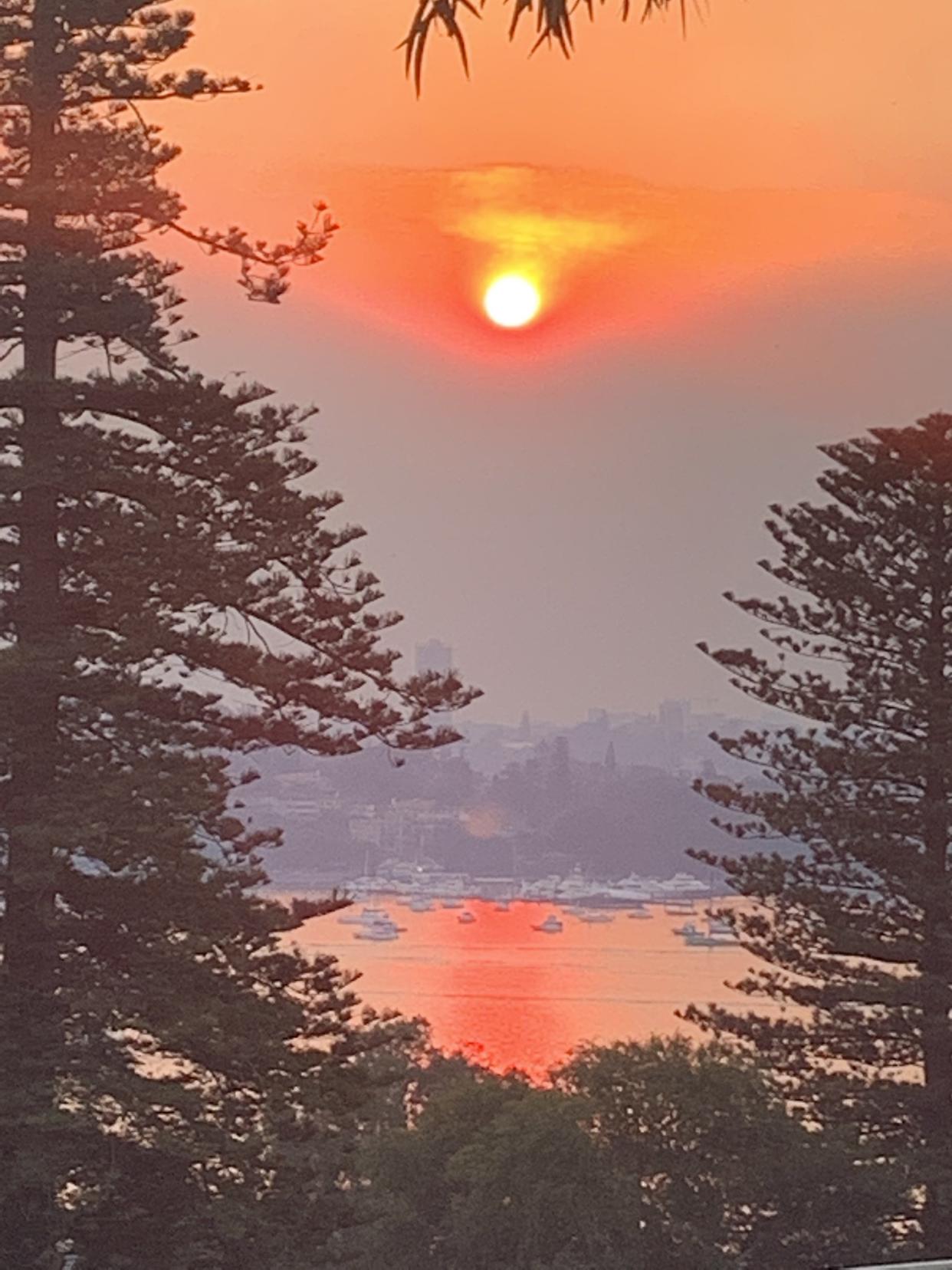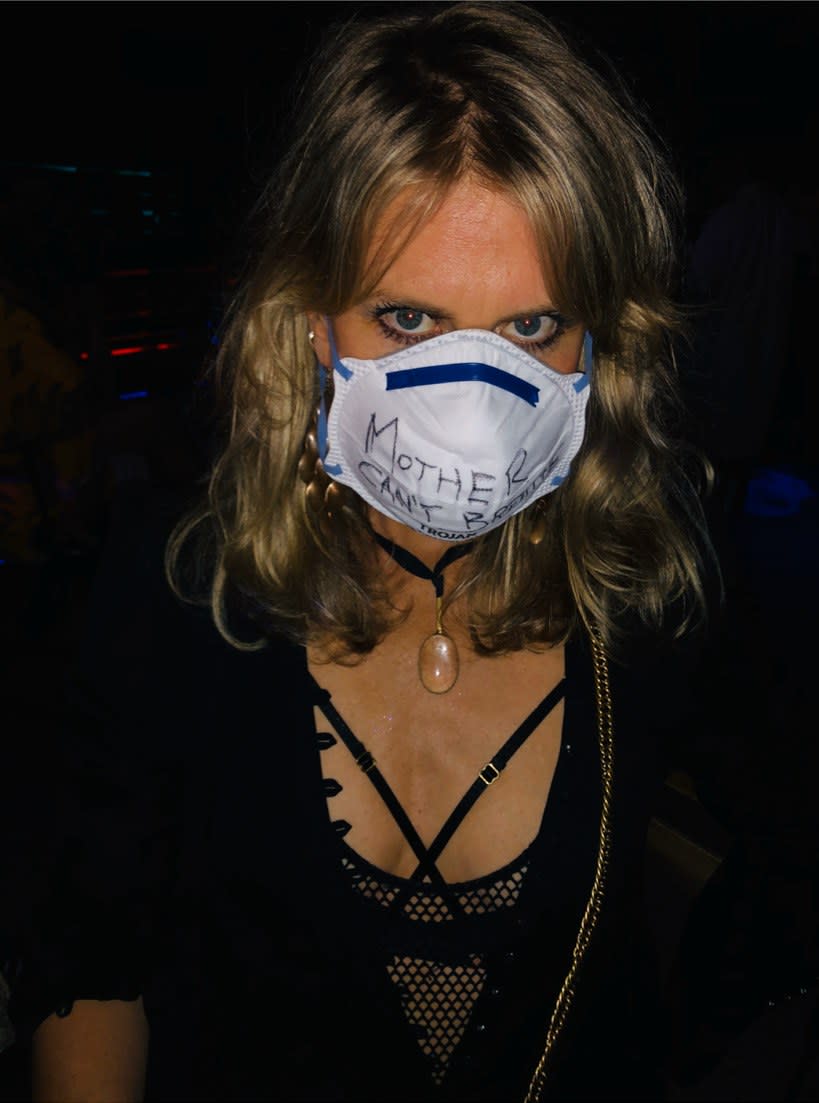“Mother Can’t Breathe”: Designer Kit Willow Shares Her Australian Bush Fire Story

Kit Willow is the founder and designer of Kitx, a sustainably minded label based in Sydney.
Here in Australia, 2019 was the hottest and driest year on record. The fires started in September—months before what used to be the official start of the fire season in this sunburnt country—and they’ve only spread since. The scale of the disaster is truly apocalyptic. As of today, an area almost twice the size of Belgium has been destroyed and an estimated half a billion animals have died, including livestock and endangered native species—you’ve seen the kangaroos and koalas on Instagram. Fifteen hundred homes have been lost, and 23 human lives.
Last month in Sydney, where I live, the air was so thick with smoke that my kids’ schools posted signs: “All children must stay indoors due to hazardous smoke, no outdoor play allowed.” Our eyes stung and the sun was red all day, casting an ominous orange light. We kept the windows closed to stop ash from getting into the house, and masks suddenly appeared on the streets. It was reported that the pollution was 12 times the threshold for hazardous air quality. In fact, according to the Sydney Morning Herald, the fires have emitted two thirds of the nation’s annual carbon dioxide emissions in the span of a few months. Like climate nomads in a Mad Max movie, my friends and I discuss the new orange smoke symbols on Apple’s weather forecasts and which masks most effectively trap the smoke’s toxic fumes. I’ve scribbled “mother can’t breathe” on mine. Other times we go silent, grieving for the lost animals, the lost forest, the end of a way of life.
Now, here we are in January 2020, a new year and a new decade, and the fires continue to rage. Over the weekend, evacuees arrived near my parents’ property in Hastings, Victoria, on the southern coast near Melbourne. They’re refugees from the fires, from climate change, though don’t count on the Prime Minister Scott Morrison to call them that; he has so far declined to admit the role that rising temperatures play in this conflagration. Our volunteer firefighters are the true heroes. Apparently, some of them are even buying their own supplies because the government hasn’t provided the resources required to combat these extreme fires.

Sitting in my office in Paddington, Sydney, today I’ve been asking myself, how can I add value and be a positive force for the future of the planet in this critical moment in our history? When I started Kitx in 2014, I wanted to create a brand with a purpose beyond making women look and feel beautiful. I set out to create a brand that considers planetary impact over profit in every decision made—a brand that engineers each garment with consciously sourced materials so that not only is it kind in its creation, but also that it wears well and cares well and breaks down completely back into earth or water. Garments like a shirtdress made with organic hemp that requires no insecticides or pesticides and very little water to grow, with buttons carved from a corozo nut, an organic cotton care label, and a Kitx label from linen. Without this driving purpose I wouldn’t be doing what I’m doing. But is it enough?
The fashion industry is a huge polluter, estimated to be the second or third largest behind oil, with 70% of this impact coming from the material sourcing stage. Designers and brands need to make new commitments.
To say no to virgin nylon and polyester, the production of which
releases nitrous oxide into the atmosphere, to say nothing of the
microplastics that are released into our oceans when they’re washed.To insist that every component and material that goes into our
garments can break down back into earth if disposed, and that no
toxic chemicals have been used in their creation, contaminating water,
workers’ health, and land. To commit to producing with regenerated
waste (i.e. upcycled materials) and to design with them in ways that minimize the need for washing.To encourage, support—and, if possible—fund weaving and knitting
houses that repurpose discarded and unused fabrics, turning waste
into future materials.To opt out of virgin plastic in favor of compostable packaging that
breaks down in a domestic compost if discarded.And to begin making changes without delay. We’re better off if
millions of people and businesses do “sustainability” imperfectly
than if only a handful do it perfectly.
One of the issues with our economic system is that nothing is priced on the evaluation of the cost to the planet’s resources. We should price every material to be representative of the true cost to the planet. Virgin nylon should be expensive, as the cost to the planet is very high. Also, governments could begin to tax planet-costly materials and subsidize planet-friendly innovation and existing materials. When that happens, these choices will become easier for more of us designers to make. Until then, it’s up to us as individuals and businesses to change.
C is such an important letter of the 2020s. C for coal; leave it in the ground. C for the climate change that is exacerbating these fires. C for compassion, for the earth not least of all. We need to put planet before profit, as consumers, as creators. The fires in Australia have made it obvious: Our species and our future depend on it.
Originally Appeared on Vogue

